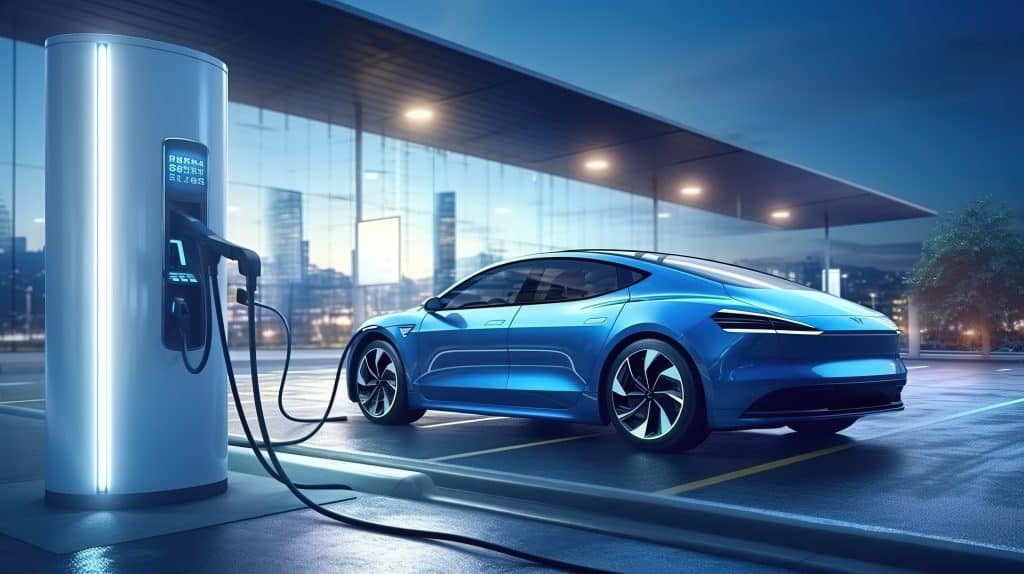Imagine a world where your electric vehicle charges itself as you drive, eliminating the anxiety of running out of juice in the middle of nowhere. Sounds like science fiction? Well, welcome to the realm of In-Motion Charging Technology.
Unveiling the Challenges: Why Can’t Electric Cars Charge Themselves While Driving (Yet)
Why can’t electric cars charge themselves while driving? The notion of electric cars charging themselves while in motion sounds like a dream come true, but let’s unpack why it’s not a reality just yet. While In-Motion Charging technology holds immense promise, there are several roadblocks preventing our electric vehicles from becoming self-sufficient energy generators on the go.
- Energy Transmission Efficiency
One of the primary challenges lies in the efficiency of transmitting energy from the road to the vehicle. As your electric car zips along the highway, the energy transfer process must be seamless and lossless. Unfortunately, the real world isn’t as forgiving. Transmission losses, caused by factors like distance and alignment, hinder the efficiency of In-Motion Charging systems. Until we can minimize these losses, the dream of self-charging electric cars remains elusive.
- Costly Infrastructure Implementation
Implementing In-Motion Charging on a large scale involves a significant overhaul of our existing road infrastructure. Installing charging pads or creating dedicated charging lanes requires substantial financial investment. Governments and private entities must weigh the benefits against the costs, and the economic feasibility of such a massive undertaking is a key consideration. Until a cost-effective approach is found, widespread implementation remains a challenge.
- Standardization and Compatibility
The electric vehicle landscape is diverse, with various manufacturers producing cars with different charging technologies. For In-Motion Charging to become a reality, a standardized and universally compatible technology must be established. This means that all electric vehicles, regardless of make or model, should seamlessly integrate with the charging infrastructure. Achieving this level of standardization is no small feat and requires collaboration and agreement within the automotive industry.
- Safety Concerns
Safety is non-negotiable, especially when dealing with high-voltage charging systems embedded in roads. In-Motion Charging systems must be robust enough to withstand the wear and tear of constant traffic, extreme weather conditions, and potential accidents. Ensuring the safety of drivers, passengers, and pedestrians is a top priority, and until foolproof safety measures are in place, widespread adoption of this technology is unlikely.
The Promise of In-Motion Charging
In-Motion Charging, also known as dynamic wireless charging, holds the promise of extending the range of electric vehicles by charging them while in motion. It’s like a never-ending fueling station on the highway. The basic idea is simple: embed charging infrastructure in the road, and as your electric vehicle cruises along, it slurps up the energy, keeping your battery perpetually topped up.
The Feasibility Spectrum
- Infrastructure Challenges
While the concept seems straight out of a utopian future, the reality is a bit more complex. Implementing In-Motion Charging requires a significant overhaul of our current road infrastructure. Embedding charging pads into existing roads or developing dedicated lanes with built-in charging capabilities demands substantial investment and meticulous planning. It’s a massive infrastructure project that requires collaboration between governments, private companies, and perhaps a touch of magic.
- Efficiency Quandary
The efficiency of In-Motion Charging systems raises eyebrows. How much energy is lost during transmission from the road to your vehicle? Can we achieve a level of efficiency that makes this technology economically and environmentally viable? These are the critical questions that need concrete answers. After all, if we’re losing more energy in the charging process than we’re gaining, it defeats the purpose.
- Compatibility Hurdles
Not all electric vehicles are created equal. In-Motion Charging requires standardized technology across all manufacturers to ensure seamless integration. Picture this: you’re cruising down the highway, and suddenly your In-Motion Charging-enabled vehicle enters a section of road without the necessary infrastructure. How do you cope with the transition? Compatibility challenges must be addressed to make this technology universally applicable.
Navigating the Unknown: Unraveling the Pros and Cons
Let’s dive deeper into the pros and cons of In-Motion Charging. Think of it as a journey where every pit stop brings us closer to understanding the intricacies of this transformative technology.
Pros:
- Continuous Range Extension
The most obvious advantage is the potential for continuous range extension. Imagine embarking on a cross-country road trip without the need to stop and charge. In-Motion Charging could turn lengthy charging stops into relics of the past, making electric vehicles as convenient as their gasoline counterparts.
- Reduced Battery Sizes
With the ability to charge on the go, electric vehicles may not require large batteries to achieve extensive ranges. Smaller batteries mean less weight, resulting in increased overall energy efficiency. It’s a win-win situation for both vehicle performance and manufacturing costs.
- Minimal Disruption to Routine
In-Motion Charging seamlessly integrates into our daily routines. No more scheduling charging sessions or fretting over finding the nearest charging station. The road becomes the charger, eliminating the need for conscious energy management and making electric vehicles more user-friendly.
Cons:
- Technological Complexity
Implementing In-Motion Charging involves a complex interplay of technology. From the charging infrastructure embedded in the road to the communication systems ensuring compatibility with diverse electric vehicles, it’s a technological web that demands precision. Any hiccups in this intricate network can lead to malfunctions and disruptions.
- High Initial Investment
The upfront cost of developing In-Motion Charging infrastructure is a significant hurdle. Governments and private entities must be willing to make substantial investments for widespread adoption. The financial burden may slow down the integration of this technology into our everyday lives.
- Adapting Existing Infrastructure
Revamping existing roads and creating dedicated lanes for In-Motion Charging isn’t a task for the faint-hearted. The logistics of seamlessly integrating this technology into our current infrastructure require meticulous planning and execution. It’s akin to redesigning the blueprint of our transportation networks.
The Road Ahead
As we navigate through the complexities of In-Motion Charging, it’s essential to remember that innovation comes with its set of challenges. The feasibility and limitations we’ve discussed aren’t roadblocks; they’re checkpoints that guide us towards refining and perfecting this technology.
Caroline is doing her graduation in IT from the University of South California but keens to work as a freelance blogger. She loves to write on the latest information about IoT, technology, and business. She has innovative ideas and shares her experience with her readers.






